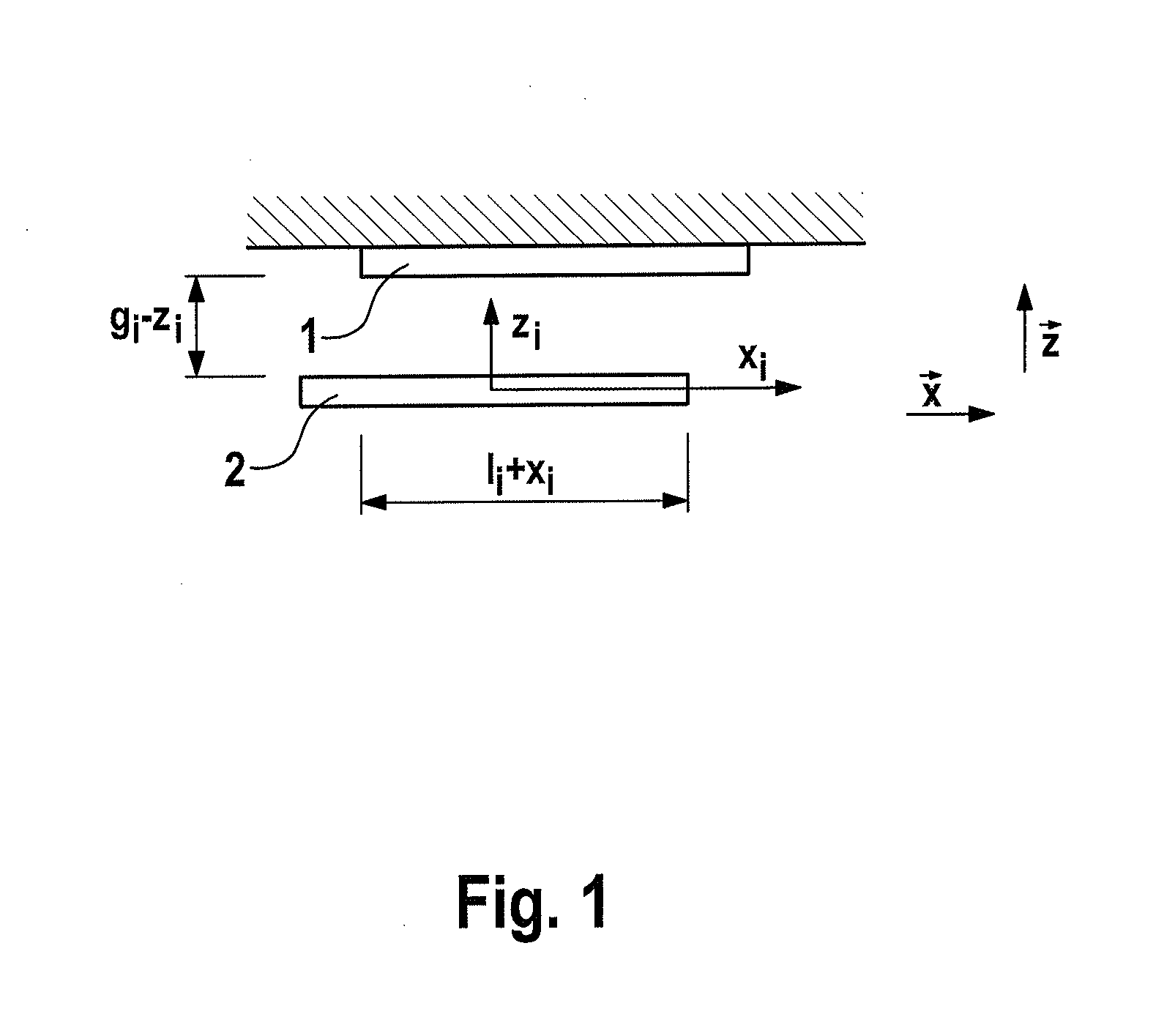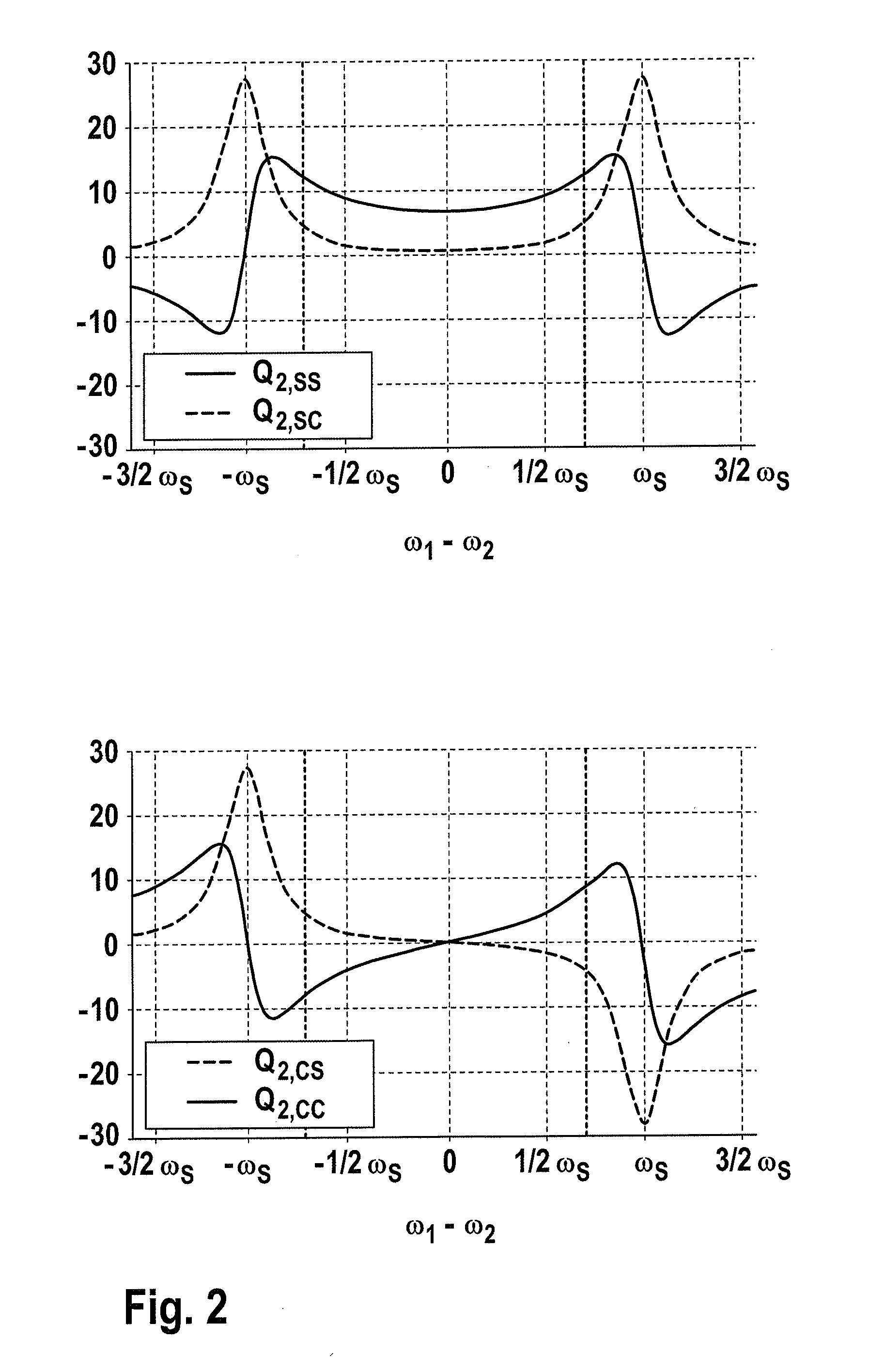Method for the decoupled control of the quadrature and the resonance frequency of a micro-mechanical gyroscope
a micro-mechanical gyroscope and quadrature technology, applied in the direction of speed/acceleration/shock measurement devices, instruments, surveying and navigation, etc., can solve the problems of undesired edge angles of the respective structures, measurement errors with respect, and reading-out direction deformations
- Summary
- Abstract
- Description
- Claims
- Application Information
AI Technical Summary
Benefits of technology
Problems solved by technology
Method used
Image
Examples
Embodiment Construction
[0045]The exemplary capacitor illustrated in FIG. 1 and composed of a trimming electrode element 1 and mass electrode element 2 is as a parallel plate capacitor—wherein the distance or the distance across the gap gi is formed in the z direction between the two electrodes, and the deflection of the mass electrode element occurs in the x direction in the primary mode, wherein the change in the overlapping area occurs in the x direction, and the deflection of the mass electrode element occurs in the z direction in the secondary mode.
[0046]FIG. 3 illustrates, by way of example, the method and the rotation rate sensor according to concept A. The rotation rate sensor comprises a control arrangement 3 with which the electric trimming voltages u1, u2, u3, and u4 are adjusted, wherein the demodulated controlled variable Y is fed to a first controller unit 4, which controlled variable Y is acquired, in particular, from the original controlled variable y by means of demodulation 5 using two ha...
PUM
 Login to View More
Login to View More Abstract
Description
Claims
Application Information
 Login to View More
Login to View More - R&D
- Intellectual Property
- Life Sciences
- Materials
- Tech Scout
- Unparalleled Data Quality
- Higher Quality Content
- 60% Fewer Hallucinations
Browse by: Latest US Patents, China's latest patents, Technical Efficacy Thesaurus, Application Domain, Technology Topic, Popular Technical Reports.
© 2025 PatSnap. All rights reserved.Legal|Privacy policy|Modern Slavery Act Transparency Statement|Sitemap|About US| Contact US: help@patsnap.com



